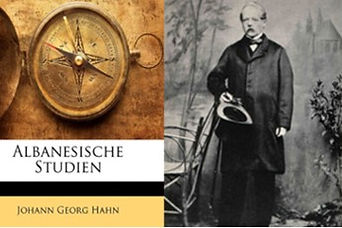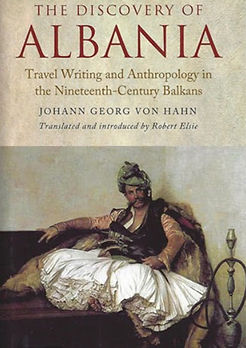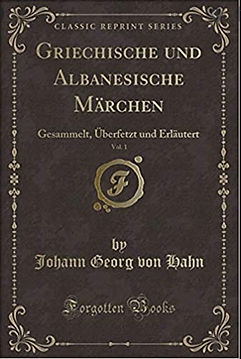Johann Georg von Hahn about Peqin



Johann Georg von Hahn (11 July 1811 – 23 September 1869) was an Austrian diplomat, philologist and father of Albanian studies on Albanian history, language and culture.
Born in Frankfurt am Main and studied law in Giessen and Heidelberg.
From 1834 to 1843, he worked for the legal authorities of the newly founded Kingdom of Greece.
He represented the Prussian consulate in Athens from 1844 to 1847, and then transferred to the Austrian vice-consulate in Janina where he came into contact with the Albanians and began learning Albanian.
Finally, in 1851, he was appointed Austrian consul on the island of Syros.
It was during his years in Janina that Hahn toured Albania and gathered information on Albanian history, philology, and folklore.
This vast amount of material was published in the seminal three-part “Albanesische Studien” (Albanian Studies).
Travels in Central Albania (1854)
Pekin [Peqin]. The location of this town is given wrongly on all our maps because it is not on the southern, but on the northern bank of the Shkumbin.
It is not two but five hours from the sea, and not twelve, but seven hours from Elbasan. It is thus not south but southeast of Kavaja, which is five hours away.
And finally, the road from Vlora to Durrës does not run through Peqin.
It passes rather across the Shkumbin river near its estuary at the village of Bashtova, the archaeological remains of which will be referred to below. However, the road from Durrës to Elbasan, the Via Egnatia, does pass through Peqin.
This became particularly apparent to me when I asked around and was always told that there was no other road from Kavaja to Elbasan but the one through Peqin.
Peqin may thus be the first station of the Via Egnatia, Clodiana.
But this is only a hypothesis because our maps are unreliable and the Peutinger Tables contain many orthographic errors. The countryside around Peqin is hilly all the way up the Shkumbin valley to where the valley ends at Elbasan.
The road runs along the north bank of the river and for much of the way, it skirts along the slopes descending to the river, yet when I used it, it was passable and well maintained.
A quarter of an hour from Peqin, I came upon a channel with seven watermills that irrigated the surrounding fields.
The father of the ruling bey had it dug by the mostly Muslim farmers of the area about twenty years ago in unpaid labor, something quite remarkable that shows just how passive the local population is. The seven watermills are leased out on a yearly basis for 90,000 piastres (about 9,000 guilders CM).
The town has 90 houses in scattered groups in the wooded hills, and several distant hamlets that are considered part of the town.
The centre of town has a pleasant market square adorned with an elegant mosque and a clock tower. Nearby is the wooden manor of the ruling family that has been governing the region since ancient times and constitutes a rare leftover of the Albanian feudal age.
Its unwavering loyalty to the sultan has enabled it to retain its old privileges whereas most of the noble families of the region, including the last hereditary Pasha of Shkodra, in whose rebellion they took part, were deposed and banished.
The air is unhealthy, which is said to come from the many rice plantations around the town that produce about 15,000 oka of rice. Judging from the surroundings, I suspect there must be much olive oil, too.
[from: Johann Georg von Hahn, Albanesische Studien (Jena: Fr. Mauke, 1854), p. 73-91; reprint Athens: Karavias, 1981). Translated from the German by Robert Elsie.]
